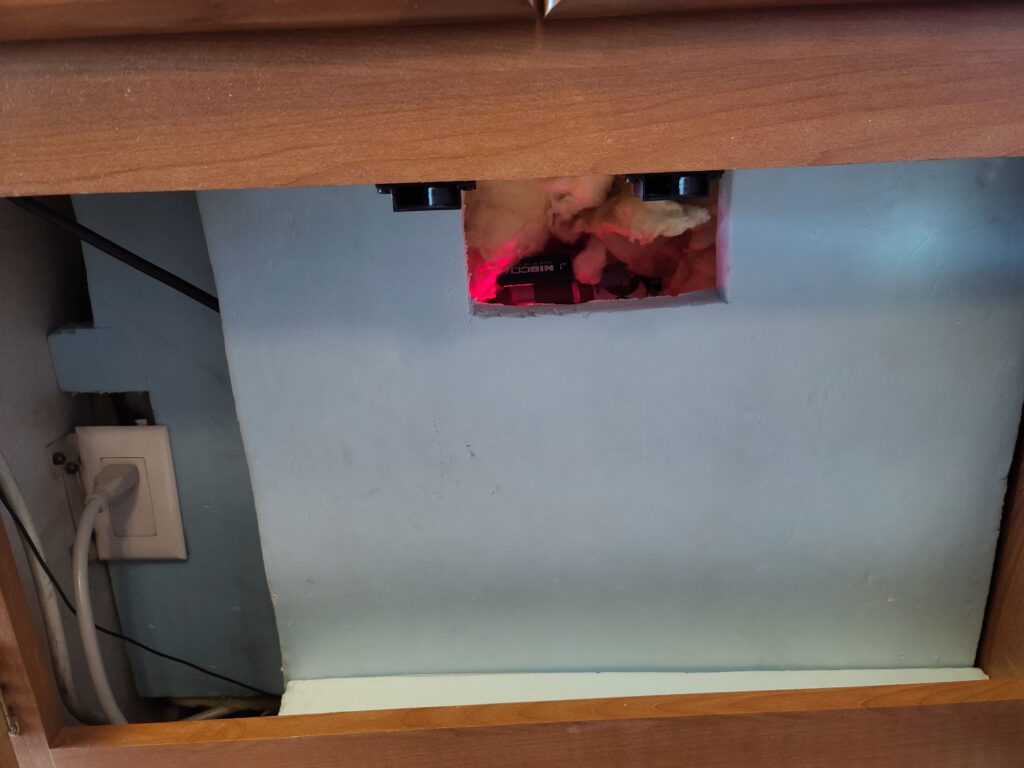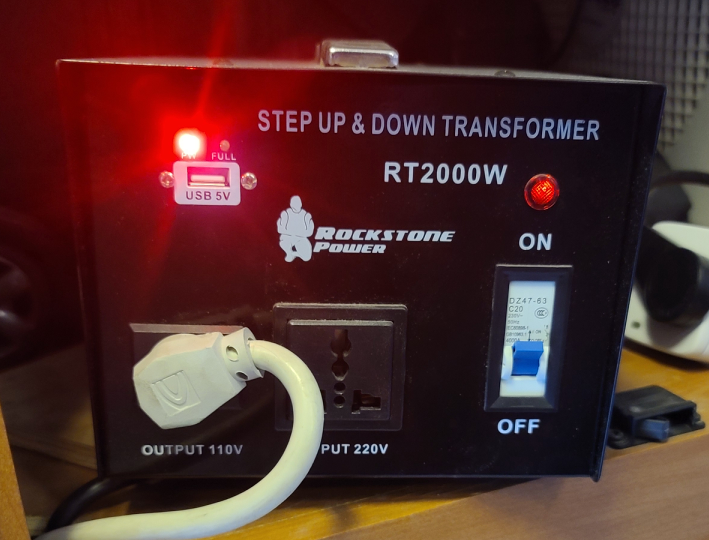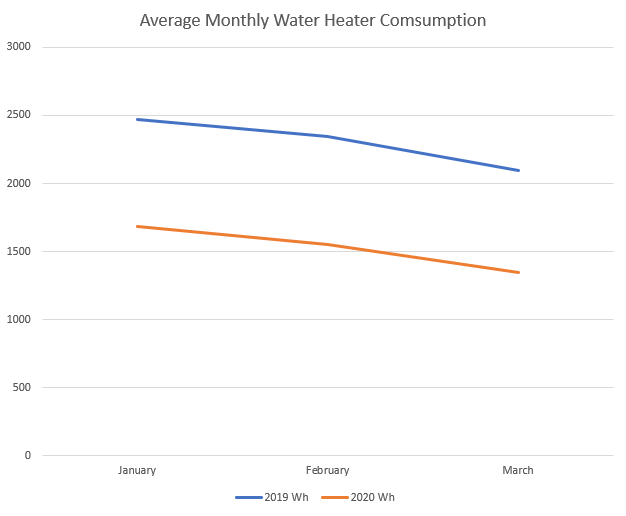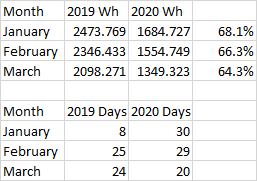One of the highest consuming electric appliances in an RV is the Water Heater. Excess energy from the sun can be "stored" as hot water. There is a couple of problems with the in the standard RV setup for a water heater.
1: The tank is so poorly insulated that the water cools off in 4-5 hours.
2: The Heating element is a very high load and often with a second load exceed the capacity of the inverter.
3: The water temperature is very hot to maximize the water volume in a long shower.
Extra insulation is often very easy to add and can reduce heat loss by more than 50%, we went from the heater cycling every 3 hours to every 5-6 hours with the insulation we added. The important part is the insulation must be fireproof. We used fiberglass insulation and a couple of foam sheet that does not touch the tank directly to make it look nicer.
Since we do not use a lot of water and do not need the very fast reheating of a full tank of cold water have we reduced the power consumption by halving the 120 Volt to 60 Volt. The resistive heater element with half the Volt also pulls half the Ampere for a total reduction to 1/4 of the power. Originally the tank heater used 1400 Watt and with the step-down converter use under 400 Watt. When getting a step-down converter always only care about the Current. So you need to ensure the Converter is able to handle 1400 Watt and also with a buffer since it runs for a long time, we have a 2000 Watt Step-down converter.
We had an issue with the control board from our Water Heater and Water Pumps and to solve this was a simple temperature controller added to temporarily get it working. The controller for the 120 Volt heater controls a relay with 12 Volt, the wire was cut and manually controlled from a simple controller. This controller can off course also easily be timer controlled but in our case, it runs day and night when sunny. But the temperature can now also be reduced.
With an RV used for boondocking is a long shower never anything you can do and the high temperature that allow longer showers by mixing with cold water is never used. When we need really hot water is the propane heater still able to produce that within 10-15 minutes,
Using a lower temperature actually ended up saving a lot of power and we now have data to compare with 2019 and 2020 consumption. Our water temperature at the highest point went from 60 Celsius (140 Fahrenheit) to 50 Celsius (122 Fahrenheit) as the graph below shows was our saving very measurable or more than 30% in the coldest month.
We stayed in very similar places in the South Western US and as the temperature outside heats up is the loss of heat from the tank being reduced even further with the lower maximum temperature.




